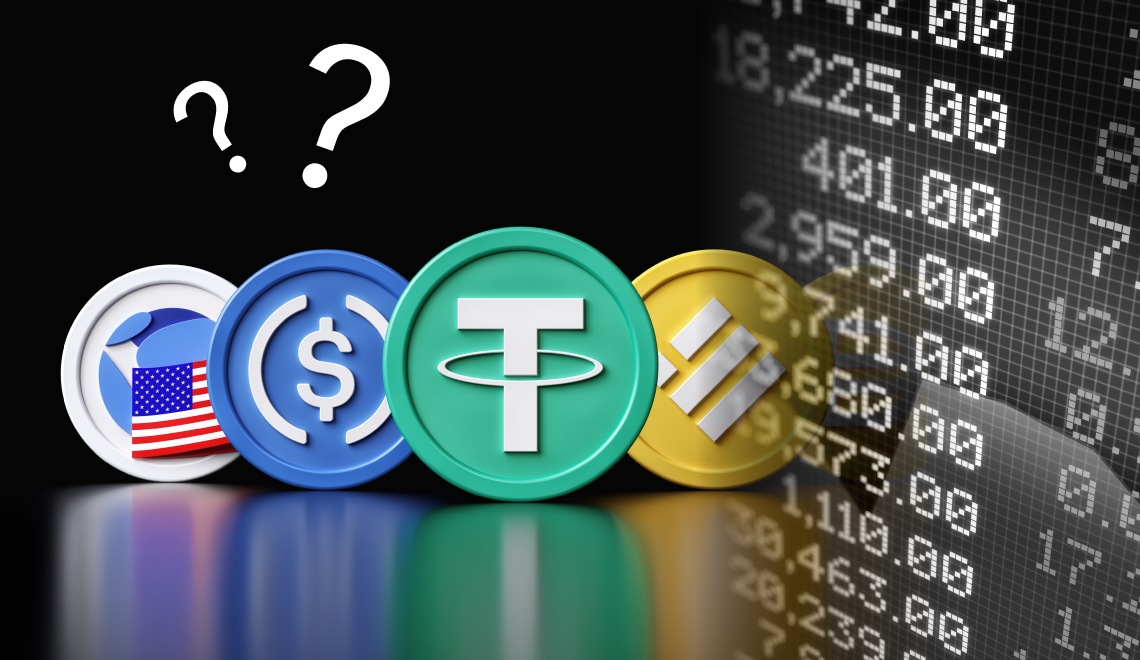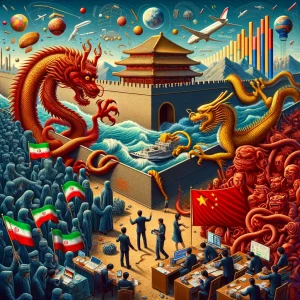TL;DR Breakdown
- Algorithmic stablecoins hit the market with new interest from investors and developers.
- Tron creates an algorithm-backed stablecoin to mirror Terra`s success.
- Understanding the new crypto buzz; what are algorithmic-backed stablecoins?
Stablecoins have been around for a while now. Traditionally, real-world assets like gold or fiat currency back these coins. The majority of popular stablecoins, such as Tether and USD Coin, are backed by reserves of U.S. dollars and other assets. The backing aims to keep these cryptocurrencies from tumbling as much in value as other digital tokens.
Now, much more advanced forms of stablecoin, algorithmic stablecoins, are getting attention. Instead of being underpinned by fiat money or another cryptocurrency, they operate on computer code.
What are Algorithmic backed stablecoins?
Analysts and investors have marketed algorithmic stablecoins as the ‘purely stable’ decentralized cryptocurrency tokens. Algorithmic stablecoins utilize an algorithm to create more coins when the price rises and then sell them off once the price drops.
The value of these coins gets maintained by algorithms that allow traders to create and destroy coins as needed to maintain their price. The goal is for the end product to be identical to its predecessor: a stablecoin close to but never equals the price of a fiat currency like the dollar. The mechanism or protocol underpinning these stablecoins acts as traditional central banks.
Developers write the algorithm’s method for executing such activities into smart contracts in an embedded style. The regulations may be only modified through social agreement or governance votes linked to seigniorage or governance tokens.
Additionally, algorithmic stablecoins include oracle contracts. The oracle contract is in charge of allowing the smart contract to communicate with external parties via the blockchain. Oracle contracts may obtain the price of a specific algorithmic stablecoin from several exchanges.
Chainlink is one of the most prominent examples of an oracle contract. The functioning of algorithmic stablecoins also necessitates a rebase contract. The oracle contract transmits the value to the rebasing contract after 24 hours. The rebase contract focuses on determining the best option between contracting and expanding the supply.
Stablecoins that employ algorithmic pricing, unlike traditional stablecoins, are not backed by assets but rather an algorithm that incentivizes traders to keep the price steady. The most well-known algorithmic stablecoin is TerraUSD (UST). Other algorithmic stablecoins include Frax and FEI USD.
Algorithmic stablecoins are becoming increasingly popular. According to CoinGecko, TerraUSD saw a 260 percent rise in its overall market value over the last quarter of 2021. As of Monday, there were 17.5 billion TerraUSD tokens in circulation. Despite their increased popularity, some have criticized TerraUSD and other algorithmic stablecoins for how they function.
After a selloff by big investors, well-known investor Mark Cuban said he lost money on the algorithmic stablecoin IRON. According to him, stablecoins will be the first to be regulated.
Examples of algorithm-backed stablecoins
The development of algorithmic stablecoins may become simpler with knowledge of some of the greatest algorithmic stablecoins. One of the most well-known instances is RAI, which offers a stablecoin protocol that eliminates the fiat-pegging feature in coin standards. It has several similarities to MakerDAO’s existing single-collateral DAI.
RAI’s algorithm includes a dedicated PID controller, which gets the current price of RAI as an input. The algorithm then alters the supply in response to the price through a continuous feedback loop.
FRAX is one more example. FRAX incorporates an arbitrage system to make it possible for a stablecoin to be viable and somewhat collateralized. Apart from its under-collateralized nature, FRAX also uses USDC in place of ETH. Another noteworthy distinction about FRAX as one of the best new algorithmic stablecoins on the market is its governance.
FRAX has a governance-minimized method, allowing for considerably fewer algorithmic dials for the community to change.
Algorithmic stablecoins shake up the crypto market
The Tron network is developing a new dollar-pegged cryptocurrency, the USDD (or Decentralized U.S. Dollar), which an algorithm will back. On 21 April 2022, creator Justin Sun announced that Tron would launch the USDD (or Decentralized U.S. Dollar), a stablecoin beginning 5 May 2022.
The company is also considering a stablecoin for payment settlements, and it will not be subject to the same rules as Tether (USDT) or Circle’s USD Coin (USDC), which keep dollars in bank accounts as backing. Instead, USDD will use an algorithmic system similar to TerraUSD (UST) and Frax Finance (FRAX).
In a separate statement, Tron DAO said it would raise $10 billion in reserves from prominent blockchain industry figures over the next six to 12 months. The goal is to provide liquidity in case of emergency for stablecoins like USDD and Tether, both issued on Tron. The reserve money will protect the value of their assets during financial crises.
(1/5)🙌#TRON DAO joined hands with major #blockchain players to launch #USDD (Decentralized USD), the most #decentralized #stablecoin in human history.
— H.E. Justin Sun 孙宇晨 (@justinsuntron) April 21, 2022
💪 Today, we see the possibility of decentralizing the blockchain world’s most centralized territory. pic.twitter.com/S5gX3JpiVH
According to Sun, the USDD will usher in the “stablecoin 3.0 era.” The entity will create the USDD on Tron, Ethereum (ETH), and Binance Chain. Terra’s success has prompted the decision to create a bot without algorithmic stability.
The stablecoin market is worth about $190 billion, or 10% of the overall cryptocurrency market capitalization. Tether (USDT), USD Coin (USDC), Terra USD (UST), Binance US Dollars (BUSD), and DAI are the top five stablecoins, each of which has a 93% share of the total 81 stablecoins according to CoinGecko.
When USDD’s price is lower than 1 USD, users and arbitrageurs can send 1 USDD to the system and receive 1 USD worth of TRX. When USDD’s price is higher than 1 USD, users and arbitrageurs can send 1 USD worth of TRX to the decentralized system and receive 1 USDD.
Justin Sun
Tron’s news follows that another blockchain network, Near Protocol, is set to release its stablecoin called USN.





